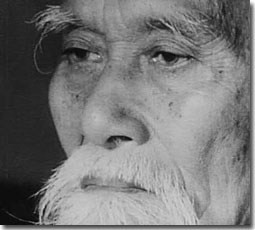Modern day Aikido can trace its origins back to the feudal society of 9th Century Japan.
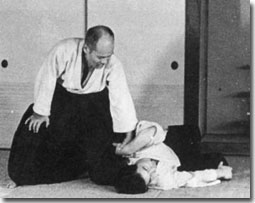
The Aiki system of techniques is said to have originated with Prince Teijun, the sixth son of the Emperor Seiwa (850-880), and was passed on to succeeding generations of the Minamoto family. Over the following generations the techniques were eventually handed down to Shinra Saburo Yoshimitsu , the younger brother of Yishiie Minamoto.
Yoshimitsu was a man of exceptional talent and skill, and it is said that he devised many of his techniques by watching a spider skilfully trap a large insect in its fragile web. His house, the Daito Mansion, has given its name to his system of Aikijutsu, which became known as Daito Ryu Aikijutsu.
The Daito Ryu techniques were handed down in secret to family members and retainers, and eventually reached Takeda Sokaku (1859-1943), who was to play a major role in the foundation of modern day Aikido.
The Daito Ryu system that was handed down to Takeda Sokaku was undoubtably vastly different from what was taught one thousand years before hand. The specific arts studied by Takeda are unknown except for his training in Ono-ha Itto-ryu kenjutsu.
All evidence points to the conclusion that the Daito-Ryu arts Takeda taught are as much a synthesis of his vast training experience and technical innovation as they are a faithful continuation of the Aizu clan martial tradition.
One of Takeda’s students was Ueshiba Morihei, the founder of Aikido. Born December 14, 1882 Ueshiba met Takeda in 1915, after attending a ten day seminar Takeda conducted.
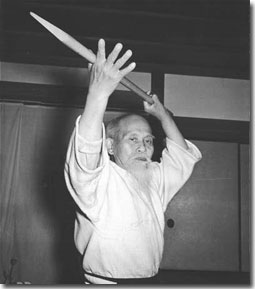
So impressed was he by Takeda’s techniques he began a study of Daito Ryu. In addition to his study of Daito Ryu (which makes up the basis of the techniques of Aikido), Ueshiba studied Kito Ryu Jujitsu, Yagyu Shinkage Ryu Kenjutsu, and other empty hand and weapon arts.
Ueshiba was a deeply spiritual man, and was a follower of the Omotokyo sect of Shintoism. The main person behind Ueshiba’s spiritual beliefs was Reverend Deguchi Onisaburo, and the Omotokyo sect had a strong influence on the development of Aikido.
In 1931, Ueshiba opened up the Kobukan or Hell Dojo. This was when Ueshiba was his most physically powerful, and training was said to be very hard. One of his students at this time was Gozo Shioda, who would later on found Yoshinkan Aikido.
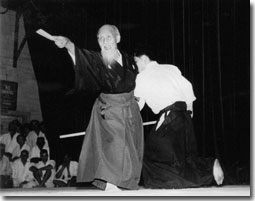
Ueshiba was held in very high regard by other martial artists of the time including Kano Jigoro, the founder of Judo, who sent many of his top Judo students to learn Aikido. These students included Tomiki Kenji, who would later go on to develop a sport Aikido style – Tomiki Aikido, and Mochizuki Minoru who later founded Yoseikan Budo.
In 1942, Ueshiba moved to Iwama, where he opened up a dojo and a farm, and set up the Aiki shrine. A few years after that, in 1945, the Aikikai was set up, even though at that time, all forms of budo had been banned after the second world war. The main Aikikai dojo was set up in Tokyo, though Ueshiba mainly stayed at his Iwama dojo, leaving the Tokyo dojo in the care of his son Kisshomaru (1921 – 1999), and other leading instructors such as Tohei Koichi, who would later go on to form Shin Shin Toitsu Aikido (better known as Ki Society Aikido).
O-Sensei Ueshiba Morihei passed away on April 26th 1969 at the age of 86. Ueshiba left a legacy of martial techniques and spiritual teachings that are now being taught the world over, and are encompassed, to varying degrees, in the various Aikido schools that exist today.
